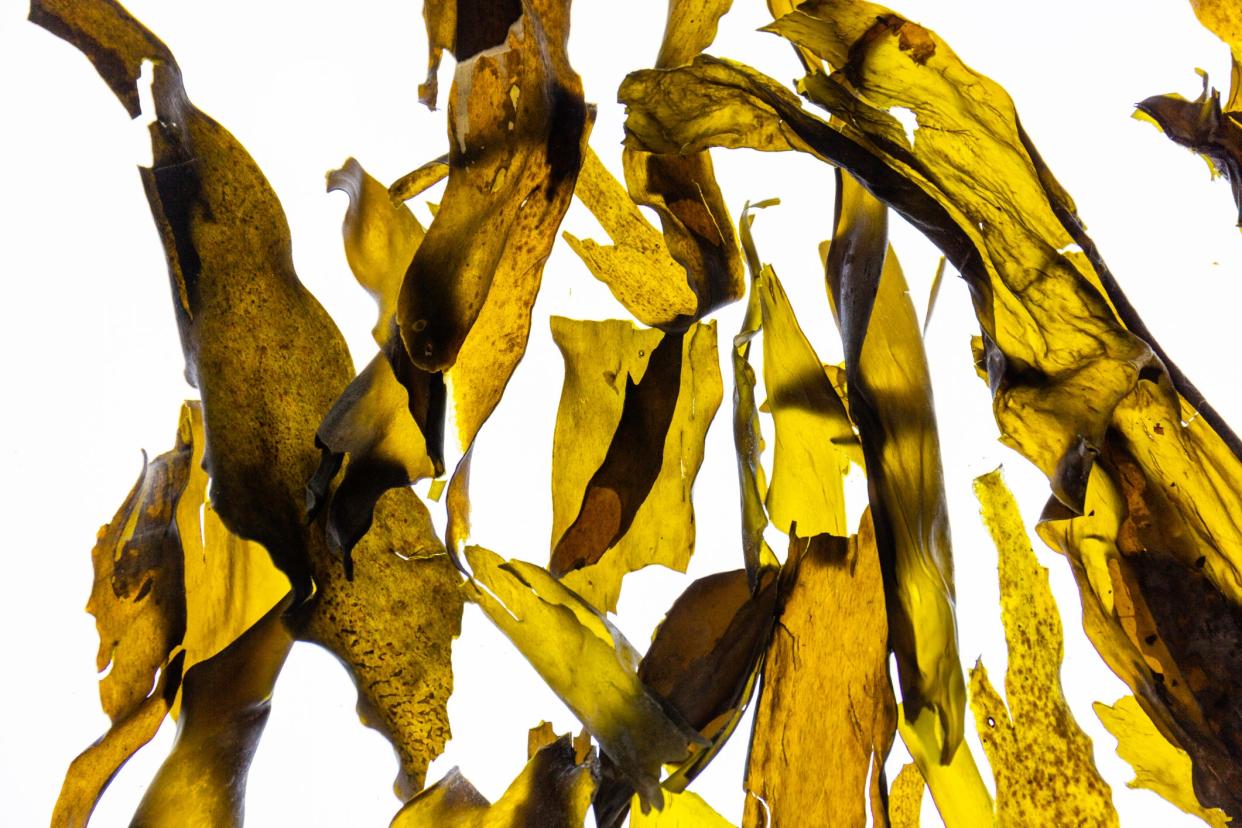Sustainable Seaweed Farming Could Be a Key to Climate-Friendly Cuisine

This article originally appeared on Vegetarian Times
In an area of the Long Island Sound called the Thimble Islands, Bren Smith has been leasing a patch of water from the Connecticut Department of Agriculture for almost twenty years. Recreationalists are welcome to kayak or swim along the surface of Smith's aquatic allotment; his focus is on what's going on a bit deeper. Smith is a regenerative ocean farmer, honoring the Thimble Islands' more than 200 years of aquaculture with seaweed farming practices that may help sustain the ecosystem for years to come.
Born and raised in Newfoundland, Canada, Smith grew up around the commercial fishing industry, and left school at 14 years old to pursue a career as a commercial fisherman. However, by the early 1990s, due to a combination of more efficient fishing technology and overfishing, the once-thriving cod fish stocks in the region had diminished to such a low rate that the government placed a moratorium on the industry in July 1992, with the intention of preserving the remaining cod in the region.
To many, this was the end of a way of life. For Smith, however, it would be the beginning of a new career as a climate farmer.
Switching to Seaweed
After earning a degree in Marine Biology from the University of Vermont, Smith settled in the Thimble Islands and began working as an oyster farmer.
Unlike commercial fishing, which can harm ocean ecosystems and deplete fish populations through destructive practices, many believe farming oysters actually helps the ecosystem. Oysters require no additional water or fertilizer, and capture atmospheric carbon dioxide. But Hurricane Irene in 2011 and Superstorm Sandy in 2012 devastated his oyster operation. When he resumed farming after Sandy, he added seaweed - a climate-positive crop - to the mix.
"What began to make sense to me is polyculture, a crop for all seasons. If one crop fails, there's a backup," Smith Says.
Although Smith didn't originally start out with the intention of farming seaweed, it became clear that the plant's ability to grow quickly and in a small space made it a desirable crop. "Seaweed has all the ecosystem benefits," says Smith. "As the climate crisis escalates, we're able to grow a crop that isn't just climate friendly, but acts as a mitigation tool. It hits multiple things: food, jobs, ocean health, and climate change. I think of it as the core crop for creating a new climate cuisine."
Kelp Is Not the New Kale
Seaweed is a common ingredient in foods from many parts of the world, but some diners who are less familiar with eating kelp find it hard to envision this swaying, water-dwelling green as entirely appetizing.
Smith thought maybe seaweed needed a rebrand. Playing on the "Eat More Kale" t-shirts popular in the early 2000s, he tried the slogan, "Eat More Kelp."
"It sounded good, and we started to do all of these events in New York City with the 'eat more kelp' slogan," he recalls. However, he quickly realized a flaw in the slogan. Namely, that kelp really isn't the new kale at all. While kale can be eaten on its own as an alternative to greens such as lettuce or spinach, kelp is different. Due to its short window of freshness after harvest - only about eight hours - seaweed needs to be processed quickly to preserve it.
Now Smith sees seaweed as more of a supporting ingredient than as the primary dish and he's settled on a different comparison: kelp as the new soy. A product that pops up in various places across the food industry. "But less evil," Smith adds.
Growing for Good
Part of the power of seaweed is that, like soy, it's incredibly versatile. Seaweed is currently being fed to cows in an effort to reduce the methane herds produce, used as a bioplastic, and, of course, as an ingredient in a variety of foods, from mustard to kelp burgers. While growing, seaweed has the ability to soak up nutrients leached out of the soil and into the waterways during land agricultural practices.
However, Smith's worst nightmare is for the kelp industry to imitate the soy industry in other ways, the ones he thinks of as "evil." As industrial soy production has scaled up, it has been criticized for contributing to deforestation, greenhouse gas emissions, and the destruction of wildlife habitats. Smith is excited about kelp to grow as an industry, because "it's almost like a blank slate. We can build something beautiful from the ground up."
To contribute to the scaling of the kelp industry in a way that treats farmers and the planet the right way, Smith co-founded GreenWave, a nonprofit that supports a global network of regenerative ocean farmers, in 2016.
In each of its first few years, GreenWave trained between eight and 10 farmers per year. But as word got out about the organization and its mission, 8,000 aspiring ocean farmers throughout the United States and more than 100 other countries signed up for the organization's training program. To meet this demand, GreenWave decided to build out its Regenerative Ocean Farming Hub in April 2022, which provides farmers with the curriculum and training they need to get started. Since its launch, there have been more than 2,400 registered hub users.
RELATED: This ‘Vegan Hunting’ Guide Is Preserving the History of Seaweed Foraging Along the California Coast
Get more of what you love from VT. Follow us on Instagram, Facebook, and Twitter, and sign up for our email newsletters.
For exclusive access to all of our fitness, gear, adventure, and travel stories, plus discounts on trips, events, and gear, sign up for Outside+ today.
